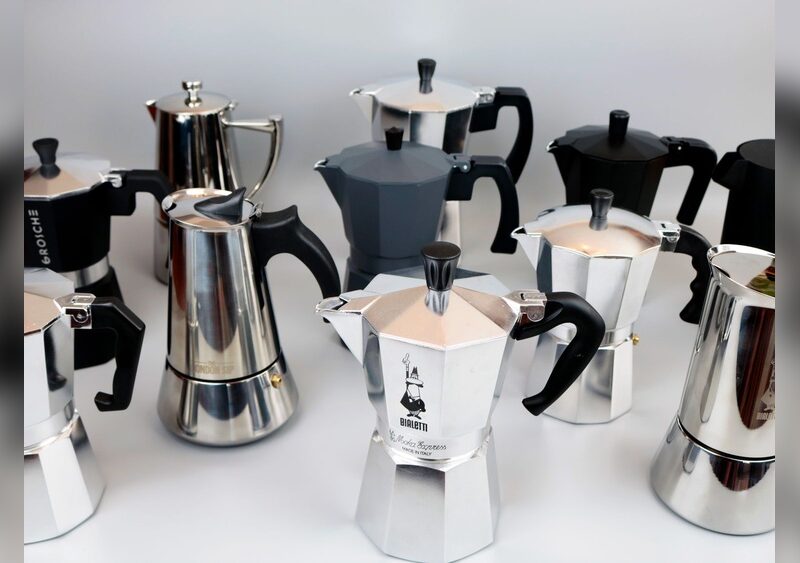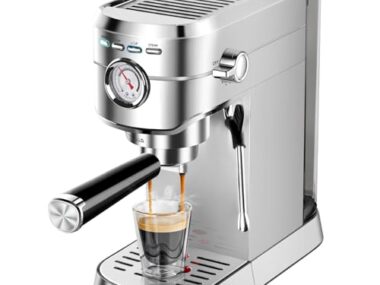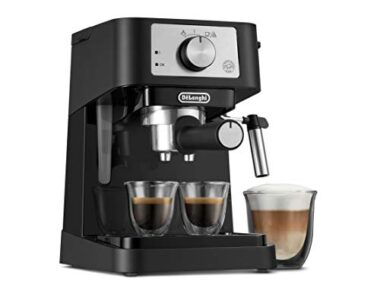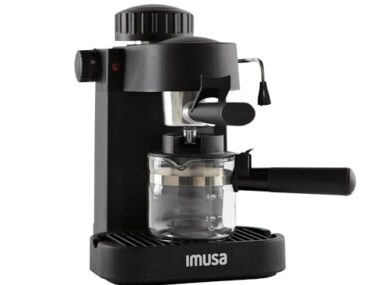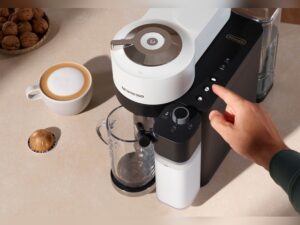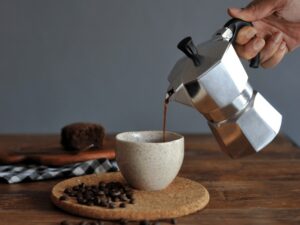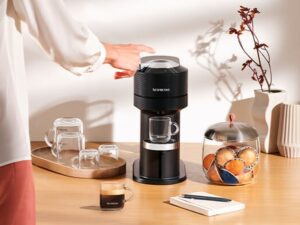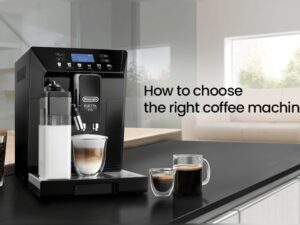Are you torn between getting an espresso machine or a moka pot for your coffee cravings? Choosing the right brewing tool can change how you enjoy your morning cup.
Imagine waking up to rich, bold coffee every day—sounds perfect, right? But which one fits your style, budget, and taste best? Keep reading, and by the end, you’ll know exactly which option suits your coffee routine and makes every sip a delight.

Credit: www.youtube.com
Espresso Machine Basics
An espresso machine brews coffee by forcing hot water through finely-ground coffee. This process creates a strong, rich coffee called espresso. Many coffee lovers enjoy espresso for its bold flavor and creamy texture.
Espresso machines come in different styles and sizes. Each type offers unique features that suit different needs. Understanding these basics helps choose the right machine for you.
How It Works
Espresso machines use pressure to make coffee. Water heats up to nearly boiling point. Then, the machine pushes water through coffee grounds using high pressure. This extracts strong flavors and oils from the coffee. The result is a thick, dark shot of espresso with a layer of crema on top.
Types Of Machines
There are manual, semi-automatic, and automatic espresso machines. Manual machines need full control of water pressure and timing. Semi-automatic machines control water pressure but let you stop the shot. Automatic machines handle most tasks with a push of a button. Each type fits different skill levels and preferences.
Key Features To Consider
Look for water temperature control for consistent results. A built-in grinder helps grind fresh coffee beans. Check the pressure level; 9 bars is ideal for espresso. Steam wands allow making milk froth for lattes or cappuccinos. Size and ease of cleaning also matter for daily use.
Moka Pot Essentials
The moka pot is a classic coffee maker loved by many. It sits between a simple drip coffee maker and a complex espresso machine. This device uses steam pressure to brew strong, rich coffee. Understanding its basics helps you decide if it fits your needs.
Many enjoy the moka pot for its easy use and bold flavor. It is small, affordable, and does not need electricity. The moka pot brings a touch of Italian coffee culture into your kitchen.
Brewing Process
Fill the bottom chamber with water up to the valve. Add finely ground coffee into the filter basket. Screw the top and bottom parts tightly. Place the moka pot on medium heat. Wait as steam pushes water through coffee grounds. Coffee collects in the top chamber. Remove from heat once you hear a hissing sound. Pour and enjoy strong, aromatic coffee.
Popular Models
The Bialetti Moka Express is the most known model worldwide. It comes in different sizes, from one to twelve cups. Other good brands include Alessi, Grosche, and Cuisinox. Some models use stainless steel instead of aluminum. Choose based on size, material, and design preferences.
Advantages Of Moka Pots
Moka pots brew coffee quickly and without much fuss. They are compact, perfect for small kitchens or travel. No need for electricity makes it versatile. Coffee tastes rich and strong, close to espresso. Cleaning is simple with just a rinse and dry. They last long with proper care and use.
Taste And Coffee Quality
Taste and coffee quality matter most in choosing a coffee maker. Both espresso machines and moka pots brew strong coffee. Yet, their flavors and textures differ. Understanding these differences helps you pick the right one for your taste.
Espresso Machine Flavor Profile
Espresso machines create rich, bold coffee with a smooth texture. They use high pressure to extract oils and flavors fast. This process brings out a deep, intense flavor. Espresso often has a creamy layer called crema on top. This adds a unique taste and mouthfeel. It highlights the coffee’s natural sweetness and slight bitterness.
Moka Pot Flavor Profile
Moka pots brew coffee using steam pressure but less than espresso machines. The coffee tastes strong but not as smooth. It has a thicker, slightly gritty texture. The flavor is more bitter and less sweet. Moka pot coffee often has a smoky, robust profile. It works well for those who enjoy bold and straightforward coffee.
Comparing Coffee Strength
Espresso machines make coffee with higher pressure, producing more concentrated shots. This results in a stronger, richer cup. Moka pots brew less concentrated coffee but still pack a punch. Their coffee is strong but lighter than espresso. Strength depends on coffee type, grind size, and brewing time. Both methods serve strong coffee, but the espresso machine is more intense.
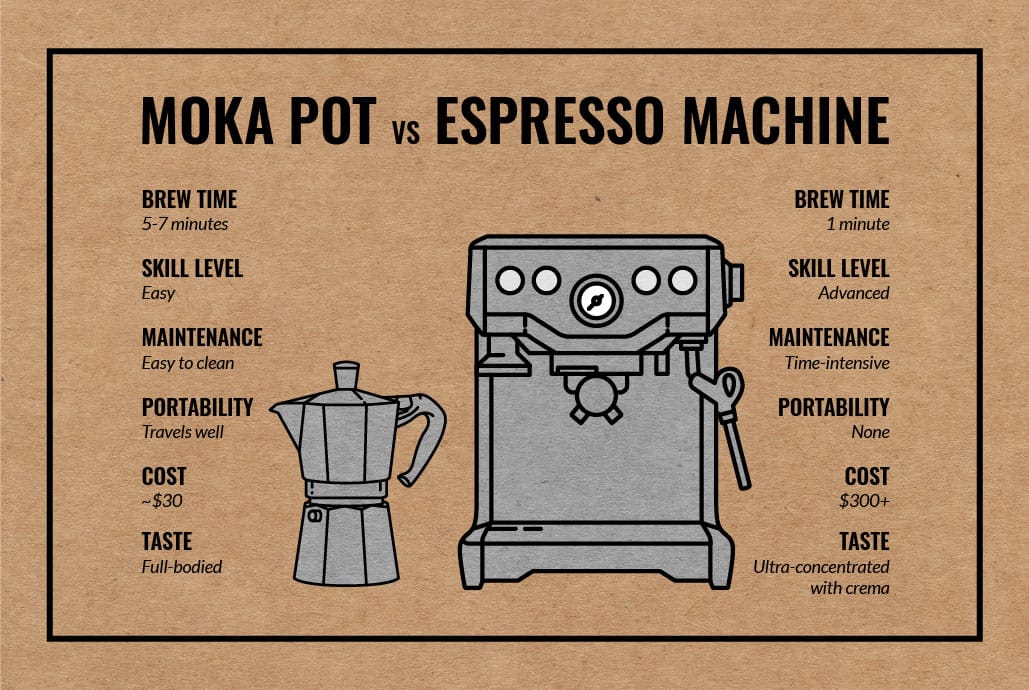
Credit: beanbox.com
Cost And Budget
Cost plays a big role when choosing between an espresso machine and a moka pot. Budget affects both the start-up price and ongoing expenses. Knowing these costs helps you decide what fits your wallet and needs best.
Initial Investment
Espresso machines usually cost more upfront. Prices can range from $100 to over $1,000. Basic models are cheaper but may lack features. High-end machines offer better control and quality.
Moka pots are budget-friendly. Most cost between $20 and $50. They are simple devices without electronic parts. This makes them easy to buy and start using quickly.
Maintenance Expenses
Espresso machines need regular cleaning. Some parts may wear out and require replacement. Descaling solutions and filters add to costs. Repairs can be expensive for complex machines.
Moka pots need little maintenance. Cleaning after each use keeps them working well. No special products are needed. Their metal parts last for years without issues.
Long-term Value
Espresso machines provide consistent coffee quality over time. They allow experimenting with different coffee styles. This can justify the higher initial and upkeep costs.
Moka pots offer good value for simple, strong coffee. They are durable and easy to use. For budget-conscious buyers, they deliver solid performance without extra expenses.
Ease Of Use And Cleaning
Choosing between an espresso machine and a moka pot often depends on how easy they are to use and clean. Both devices need regular care to make good coffee and last long. Understanding their setup, operation, and cleaning can help you decide which fits your lifestyle.
Setup And Operation
An espresso machine usually has more parts. You need to fill the water tank, add coffee grounds, and press buttons. Some machines have digital controls, which can be confusing at first. A moka pot is simpler. Just add water to the bottom, coffee to the filter, and place it on the stove. It takes less time to learn how to use a moka pot well.
Cleaning Tips
Espresso machines often need daily cleaning. You must remove and rinse the portafilter and drip tray. Some parts can go in the dishwasher. The machine’s steam wand needs wiping after each use. A moka pot requires less work. After each use, empty the coffee grounds and rinse all parts with warm water. Avoid soap on the moka pot to keep its taste pure.
Time Commitment
Espresso machines need more time to clean and maintain. You may spend extra minutes each day or week. The moka pot is quicker to clean. It only takes a few minutes to rinse and dry. For busy mornings, a moka pot saves time. Espresso machines may need more patience but offer more control over coffee style.
Space And Portability
Space and portability play a big role in choosing between an espresso machine and a moka pot. Both devices need room in your kitchen. Their size affects how easy they are to move and store. This section explains these points clearly.
Counter Space Needed
Espresso machines usually take up more counter space. They have larger bases and some parts stick out. You need a clear spot near an outlet to plug it in. Moka pots are much smaller. They fit easily on most kitchen counters. They need only a small flat area for use.
Portability Options
Moka pots are very portable. You can carry them to work, camping, or travel. They do not need electricity, so you can use them anywhere. Espresso machines are heavy and bulky. They need power and water connection. Moving them often is not easy.
Storage Considerations
Storing an espresso machine can be tricky if space is tight. It is best to keep it on the counter. Moka pots store easily in cabinets or drawers. Their compact size means they take little space. This makes moka pots a good choice for small kitchens.
Customization And Control
Customization and control matter a lot in coffee brewing. They help you make coffee just how you like it. Both espresso machines and moka pots offer ways to adjust your coffee. But they differ in how much control you get over the process.
Adjusting Grind And Brew
An espresso machine lets you change the coffee grind size easily. You can use fine, medium, or coarse grounds. This affects the flavor and strength of your espresso. Moka pots work best with a medium-fine grind. Changing the grind size too much can cause problems brewing.
Espresso machines allow you to control the brewing time too. You can stop the shot early or let it run longer. This changes the taste and crema. Moka pots have less flexibility here. You boil water, and coffee brews until the pot is empty.
Temperature Settings
Espresso machines often have temperature controls. You can set the water temperature for your coffee. This helps bring out different flavors. Moka pots rely on stove heat, so temperature varies. It is hard to keep the temperature steady, affecting taste.
Pressure Control
Pressure makes a big difference in espresso quality. Most espresso machines pump water at 9 bars of pressure. This extracts rich flavors and creates crema on top. Moka pots use steam pressure from boiling water. The pressure is lower and less consistent. This means moka pot coffee has a different taste and texture.
Durability And Longevity
Durability and longevity are key factors when choosing between an espresso machine and a moka pot. Both appliances serve the same purpose but differ in how long they last and how tough they are. Understanding these differences helps you make a smart purchase that fits your needs and budget.
Build Quality
Espresso machines usually have metal parts and plastic components. High-end models use stainless steel and brass, which last longer. Moka pots are mostly made of aluminum or stainless steel. Aluminum is lightweight but can wear out faster. Stainless steel moka pots are stronger and resist rust better. Solid build quality means fewer repairs and longer use.
Common Issues
Espresso machines can face problems with pumps, seals, and electrical parts. These parts may need repair or replacement over time. Moka pots rarely break but can develop leaks if the gasket wears out. Overheating or improper cleaning can also cause damage to both. Regular care prevents most common issues and keeps your device working well.
Warranty And Support
Espresso machines often come with warranties that cover parts and labor. Brands usually offer customer support and service centers. Moka pots have limited or no warranty but are easy to fix at home. Replacement parts like gaskets and filters are cheap and simple to find. Good warranty and support add value and peace of mind.
Best Choice For Different Users
Choosing between an espresso machine and a moka pot depends on your needs and coffee habits. Each option suits different types of users. Understanding who benefits most from each device helps make the right choice.
For Beginners
Beginners often find moka pots easier to use. They have fewer buttons and simple steps. No special skills are needed to make good coffee. Moka pots are also smaller and easier to clean. This makes them perfect for first-timers.
For Coffee Enthusiasts
Espresso machines offer more control over coffee making. Enthusiasts can adjust pressure, temperature, and grind size. This allows for a richer and more varied flavor. Machines create a thicker crema and stronger coffee. They suit those who enjoy experimenting with their brew.
For Budget-conscious Buyers
Moka pots are affordable and cost less to maintain. They require no electricity and use less energy. Espresso machines often have a higher price and need more upkeep. For buyers on a budget, moka pots provide great value. They deliver good coffee without a large investment.
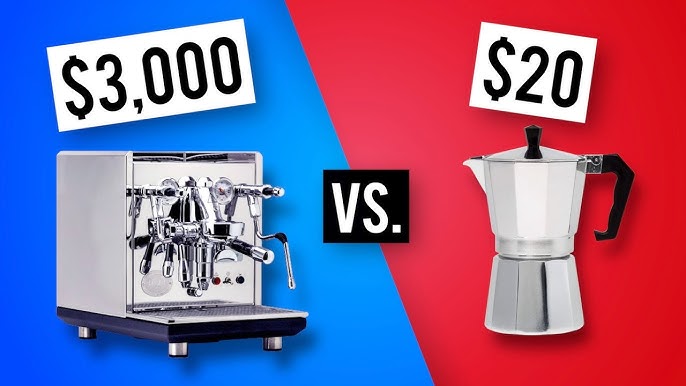
Credit: www.youtube.com
Frequently Asked Questions
What Are The Key Differences Between Espresso Machines And Moka Pots?
Espresso machines use pressure to brew coffee fast with crema. Moka pots use steam pressure and are slower, producing a strong but less creamy coffee.
Which Device Makes Better Espresso Taste At Home?
Espresso machines generally produce richer, creamier espresso with consistent quality. Moka pots deliver strong coffee but lack true espresso crema and flavor depth.
How Much Does An Espresso Machine Cost Versus A Moka Pot?
Espresso machines range from $100 to $1000+, depending on features. Moka pots are affordable, typically costing between $20 and $50.
Which Is Easier To Clean: Espresso Machine Or Moka Pot?
Moka pots are simpler to clean with fewer parts. Espresso machines require regular maintenance and cleaning of multiple components.
Conclusion
Choosing between an espresso machine and a moka pot depends on your needs. Espresso machines make rich, strong coffee fast. Moka pots take more time but are simple and affordable. Think about your budget, space, and how much effort you want to spend.
Both can make tasty coffee at home. Enjoy the process as much as the drink. Your perfect coffee tool is the one you enjoy using every day.
